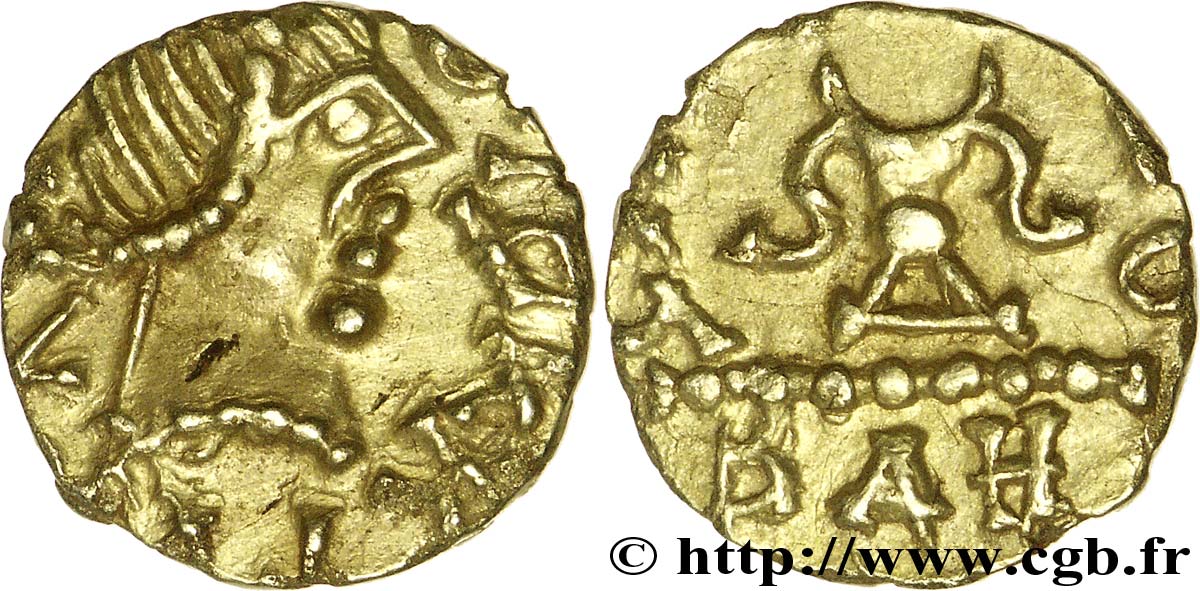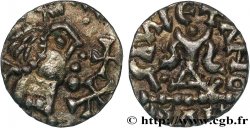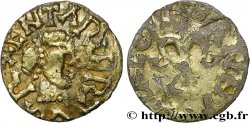v32_0981 - MEROVINGIAN COINAGE - BANASSAC (BANNACIACO) - Lozere Triens avec le nom de SIGEBERT III
MONNAIES 32 (2007)
Starting price : 2 200.00 €
Estimate : 3 200.00 €
Realised price : 3 025.00 €
Number of bids : 3
Maximum bid : 3 025.00 €
Starting price : 2 200.00 €
Estimate : 3 200.00 €
Realised price : 3 025.00 €
Number of bids : 3
Maximum bid : 3 025.00 €
Type : Triens avec le nom de SIGEBERT III
Date: 634-656
Mint name / Town : Banassac
Metal : gold
Diameter : 12,2 mm
Orientation dies : 12 h.
Weight : 1,12 g.
Rarity : R3
Coments on the condition:
Très beau portrait avec la légende en bord de flan. Le revers est légèrement décentré et il manque toute la partie supérieure de la légende. Or un peu pâle, avec une paille sur le cou et sous le menton
Catalogue references :
Obverse
Obverse legend : SIGIBERTVS R[IX].
Obverse description : Tête barbare diadémée, à droite ; diadème perlée ; légende autour de la tête.
Reverse
Reverse legend : GA[VALETAN]O // BAH.
Reverse description : Calice à deux anses, posé sur une ligne d’exergue perlée.
Commentary
Ce triens a la particularité d'avoir une légende qui se développe tout autour de la tête et de n'avoir ni rameau ni croisette(s) devant le visage. La légende est fragmentaire, mais il est possible de restituer celle de la monnaie B. 760, avec la base du R de RIX derrière la nuque. Cette légende sera remplacée par des globules (cf. B. 761).








 Report a mistake
Report a mistake Print the page
Print the page Share my selection
Share my selection Ask a question
Ask a question Consign / sell
Consign / sell
 Full data
Full data